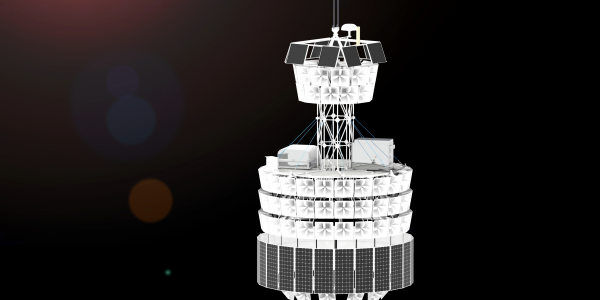NASA has chosen four small-scale astrophysics missions for further concept development in a new program called Astrophysics Pioneers. Through small satellites and scientific balloons, these selections enable new platforms for exploring cosmic phenomena such as galaxy evolution, exoplanets, high-energy neutrinos and neutron star mergers.
Washington University in St. Louis is part of a University of Chicago-led team for the Payload for Ultrahigh Energy Observations (PUEO) mission. After additional definition, PUEO and the three other concepts will undergo a concept study review before being approved for flight.
PUEO is a balloon mission designed to launch from Antarctica that will detect signals from ultra-high energy neutrinos, particles that contain valuable clues about the highest energy astrophysical processes, including the creation of black holes and neutron star mergers. Neutrinos travel across the universe undisturbed, carrying information about events billions of light years away. PUEO would be the most sensitive survey of cosmic ultra-high energy neutrinos ever conducted.
PUEO leverages experience from and supersedes the successful Antarctic Impulsive Transient Antenna (ANITA) program that physicists at Washington University previously supported through all four Antarctic flights.
“The primary roles for Washington University in PUEO will be the same as for ANITA,” said Brian Flint Rauch, research assistant professor of physics in Arts & Sciences. “They include the power system with the beautiful drop-down photovoltaic array. Our physics machine shop will fabricate a significant fraction of the gondola structure, and we will handle the ground telemetry reception software and computers that receive and distribute telemetry data. We will support instrument and payload integration.”
Rauch said that Washington University scientists expect to support the Antarctic flight campaign and possibly instrument recovery. Members of his team have extensive Antarctic experience with the SuperTIGER and ANITA programs, and also supported the 2018 X-Calibur Antarctic launch. Technicians Dana Braun and Garry Simburger also supported the 2001 and 2003 TIGER Antarctic campaigns.
A white paper co-authored by Rauch and Marty Israel, professor of physics at Washington University, outlines the ways in which PUEO’s design improves upon ANITA, including by increasing sensitivity by more than an order of magnitude at energies below 30 EeV. PUEO will either make the first significant detection of or set the best limits on ultrahigh-energy neutrino fluxes.





